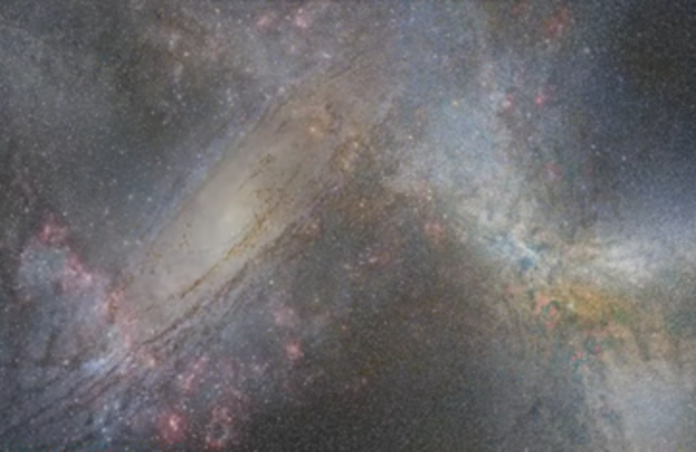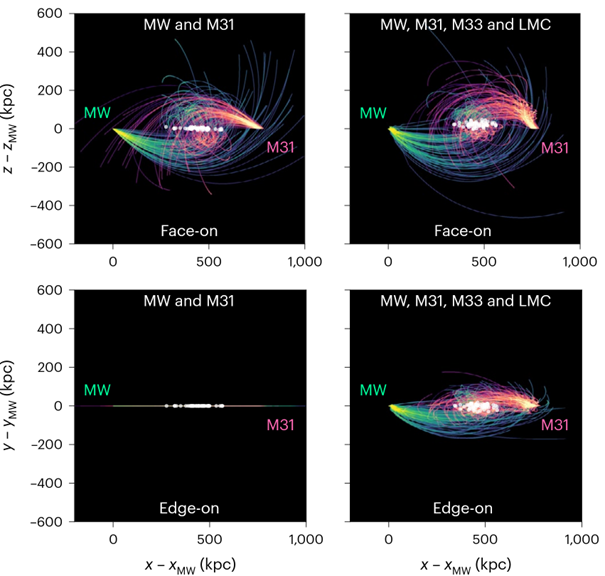Merger Between the Milky Way and Andromeda Galaxy Called into Question

It is well established that within the next 4.5 billion years, the Milky Way and Andromeda (M31) galaxies will collide. Together, they make up the most massive members of the local group, a gravitationally bound collection of nearby galaxies, dwarf galaxies and intergalactic medium (IGM). As such, the Milky Way and Andromeda have been slowly drifting toward one another, fated to eventually collide and merge into a single, larger strucutre.
However, recent research led by Till Sawala challenges calls this result into question. The study finds that the probability of a merger lies closer to 50%. The team focussed their efforts on the four largest bodies of the local group, the Milky Way, Andromeda, Triangulum (M33), and the Large Magellanic Cloud (LMC), with goal was to determine how observational uncertainties might affect predictions of the system's long-term evolution.
It is quite simple to use observational methods to determine the masses, distances, proper motions and line of sight velocities of nearby galaxies. In principle, full knowledge of these parameters is sufficient to reconstruct their three-dimensional positions and velocities, and hence model their dynamical evolution under gravity. However, each of these measured quantities carries significant uncertainties. To account for this, Sawala et al. employed a Monte Carlo approach, generating 50,000 randomized sets of initial conditions drawn from observational distributions. These were truncated at ±2σ from the mean to avoid unphysical conditions.

Each sampled configuration was then evolved over 10 Gyr years using Newtonian dynamics, including gravitational interactions and dynamical friction. This 4-body model employed a numerical leapfrog integrator to dynamically update positions and velocities. Merger events were considered to have occurred once the Milky Way and Andromeda galaxy’s separation fell below a 20 kpc threshold. Of their sets, just 54% crossed this threshold within this timeframe, with a median merger time of ~7.6 Gyr.
The team also ran smaller-scale simulations to isolate the influence of individual galaxies on the merger outcome. In these cases, they sampled 2,500 initial configurations for each scenario. In the two-body model involving only the Milky Way and Andromeda, a merger occurred in just 44% of simulations. When M33 was added to form a three-body system, the merger probability increased to 63%, whereas including the LMC instead reduced the likelihood to 37%.
Other studies should seek to refine and constrain these initial parameters more, with particular emphasis being placed on the proper motions of Andromeda and M33, as well as all mass estimates, as these are the largest sources of deviation within their models. Even small improvements could significantly narrow down the range of possible outcomes. Additionally, the team are keen to build on their own methodology, by taking into account other members of the local group, as well as the diffuse IGM. Nevertheless, the authors conclude that, “Proclamations of the impending demise of our Galaxy seem greatly exaggerated.”
--
Journal Source: T. Sawala et al., No certainty of a Milky Way–Andromeda collision, Nature Astronomy, (2025), DOI: https://doi.org/10.1038/s41550-025-02563-1
Cover Image Credit: NASA/Hubble
